Just a reminder: The future of LiA is very much in doubt, and it’s up to you to decide what happens next. Thank you for all your support!
That was, without an ounce of hyperbole, one of the best action episodes of any soccer anime, ever. The sort of episode that so nails it on every level that my first instinct is to shut up and let it speak for itself. I can’t, of course – it’s not what I do at this place – but I always know I can never do an ep like this justice. Especially with sports anime they do tend to do all the hard work themselves when they’re this good, making it incredibly easy for the audience to just enjoy the ride.
This battle between Esperion and Musashino is fascinating on so many levels, most obviously because Ao Ashi has done such a good job of establishing the characters on both sides. But also because these two teams are so utterly different, and soccer matches between two contrasting styles are always the most interesting. The driving force early in the contest is that Musashino has self-belief and Esperion does not, and this allows them to adapt on the fly while remaining true to their essential style. And this is another critical factor – Musashino is playing the way they always play, while Esperion is trying to implement something completely foreign to them.
Ashitio’s frustration is well-placed – there’s no one to step up and take charge when Esperion needs to be shored up. “We’re all first-years” is not an invalid excuse, but the truth seems pretty apparent – Ashi is the one who sees more than anyone else and isn’t shy about giving orders. This side needs a leader on the pitch (and Date isn’t really the hands-on type from the touchline). I’d grown despairing of Date, in fact, when he finally showed he did have a Plan B. That is, to pull the fullbacks up and flood the midfield, overwhelming the high press with sheer numbers and giving Esperion options to play direct.
I’m with Date – and Soichirou, and Ashi, and Keiji – you can’t abandon a strategy and revert to your comfort zone the minute things start to go wrong. That said, this is a high-risk gambit, and risk is normally Musashino’s comfort zone. Pep Guardiola often does this on the rare occasions when his Manchester City need a goal late – basically plays his fullbacks as wide forwards (usually after subbing on a second striker) and effectively playing with two at the back. Man City (who rarely play direct even here, always with build-up) can do it because they dominate possession so thoroughly, but for mere mortals it leaves you incredibly exposed at the back. Especially against a team that can hit you on the counter, especially with a pacey striker.
In short, this works – largely because Soichirou takes the bit in his teeth and acts like a threat. These Musahino kids know his talent, and as such he can psychologically punish them by being the threat he’s supposed to be. Fear is indeed crucial in soccer, and it can turn on a dime as the flow of the match changes. The equalizer comes as a result of Ashito’s pace and special awareness, and Soichiroiu’s sheer ability (that finish was almost Tsubasa-like). Fear has changed sides, and Musashino is afraid at facing the guy who’s always been better than any of them.
Naturally an on-form Soichirou draws lots of attention, which creates more space for everybody else – including Ashi, whose own obsession with scoring has been reignited by watching Soichirou. In fact it’s only what looks like a missed offside call (no VAR) which prevents him from notching the go-ahead goal. But Satake-san is no fool, and he makes a counter-adjustment. He pulls his back four into a very high line, daring Esperion to attack the space behind them and luring them into an offside trap. This too is a high-risk strategy, one only a team this well-coached and mutually trusting can pull off. And avoiding a well-executed offside trap isn’t easy for a bunch of 15 and 16-year-olds to do.
So now we have two teams playing a high line, with Esperion dominating possession. One could hardly draw up a better scenario for a team like Musashino and a striker like Vardy Kaneda, who needs only an inch of space to strike like a cobra. He’s obsessed with scoring goals, as Ashito notes – good #9’s always are – and damn good at it. He’s also correct that Esperion’s central defenders lack cohesion as a pair, which he informs Muto-san of. One goal on the counter comes quickly, and almost a second just before halftime. This is prevented only by a heroic save off the line by Kanpei-kun, though he pays a heavy price for it. This sequence, by the way, is among the best I’ve ever seen in sports anime in terms of choreography and animation.
What a fascinating cat-and-mouse this is. The onus now is really on Date-san to prove he’s the equal of Satake as a tactician and leader, and that drama will only be heightened if Fukuda (much less Hana) is there to observe it. As for Ashi-kun, his long-term future is the elephant in the room as this short-term drama plays out. It was wonderful to see him smile on the pitch – it feels like it’s been ages. But in his heart he’s still a striker, and this role won’t always allow him the freedom he’s enjoying here – most teams aren’t as ball-dominant as Esperion, and defenders have to defend. I’m still not sold that this move was right for him, and certain as ever that the way Fukuda executed it was unethical and unfair. But it may simply be a case of the boy needing to be the bigger man.



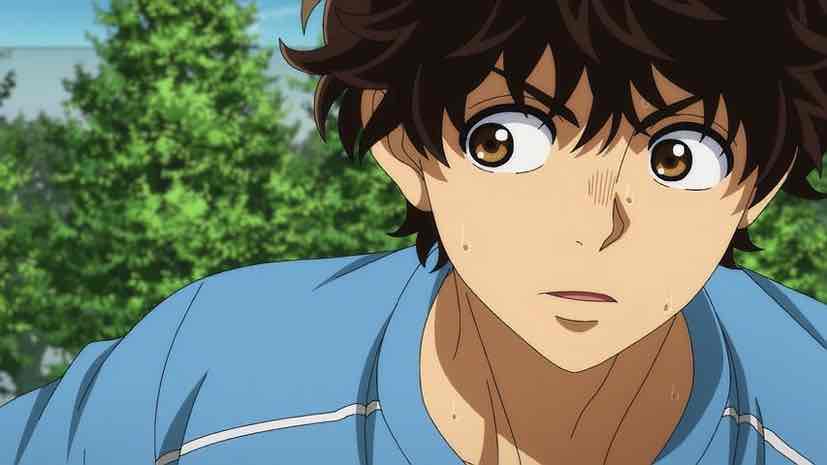


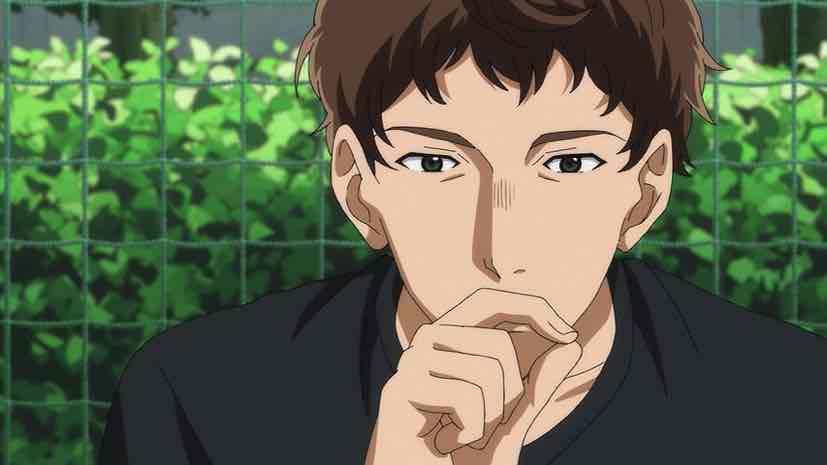
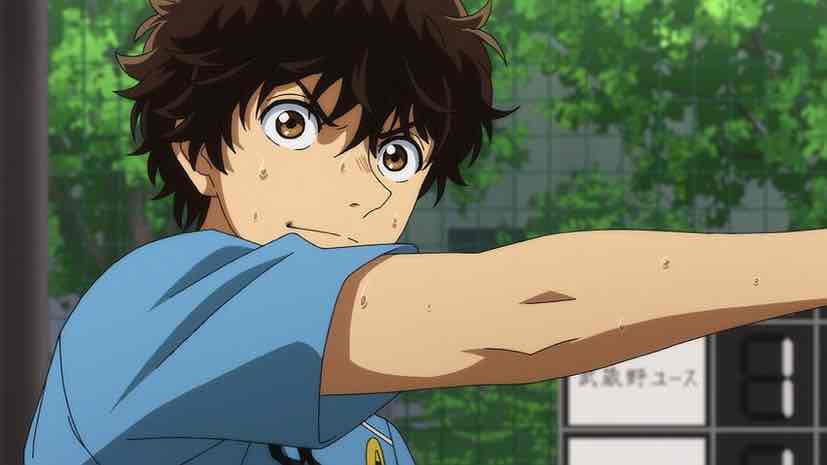
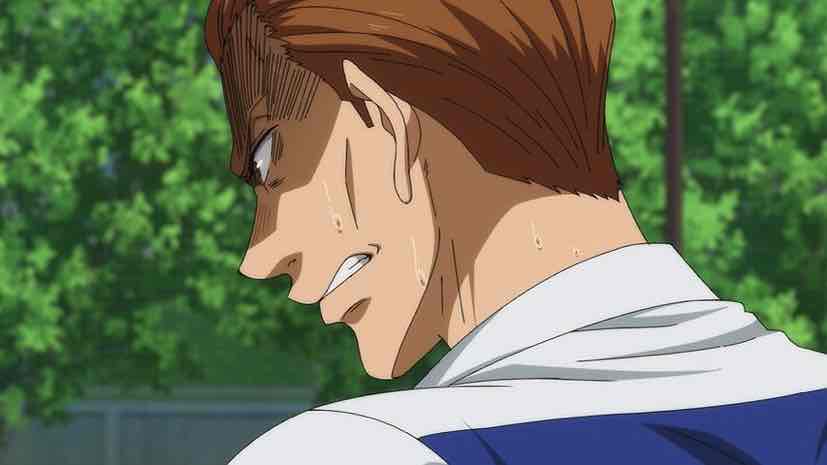
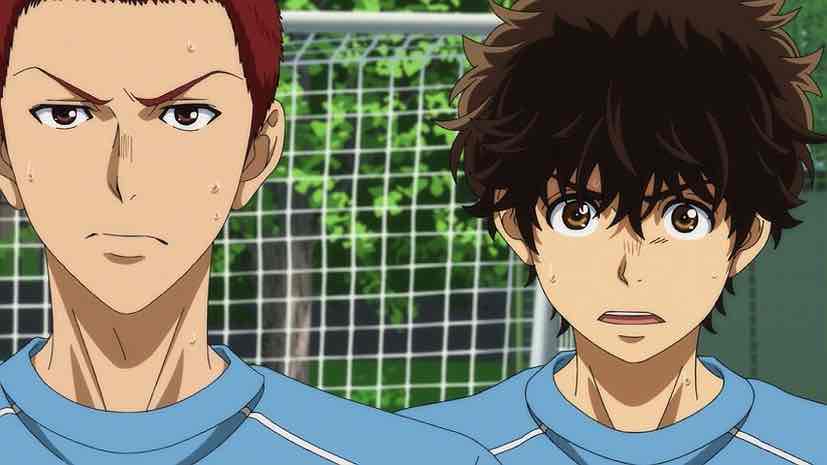
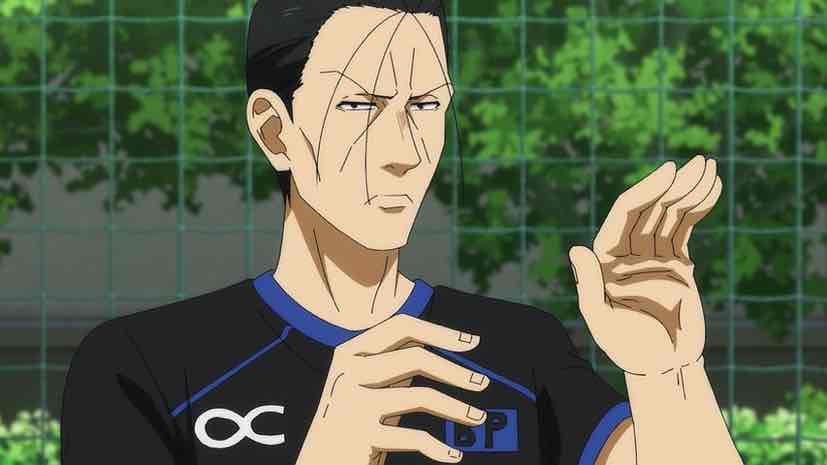
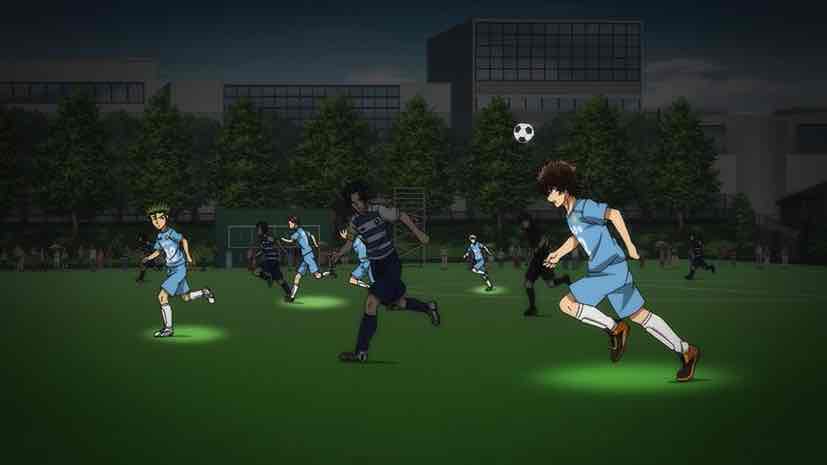
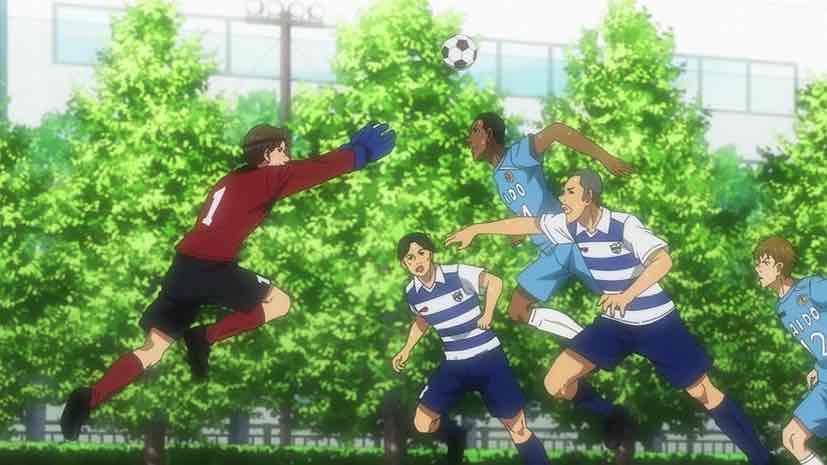
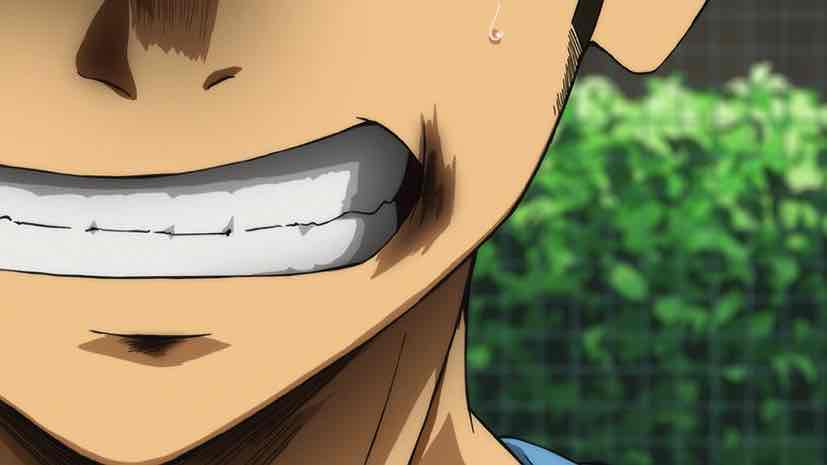
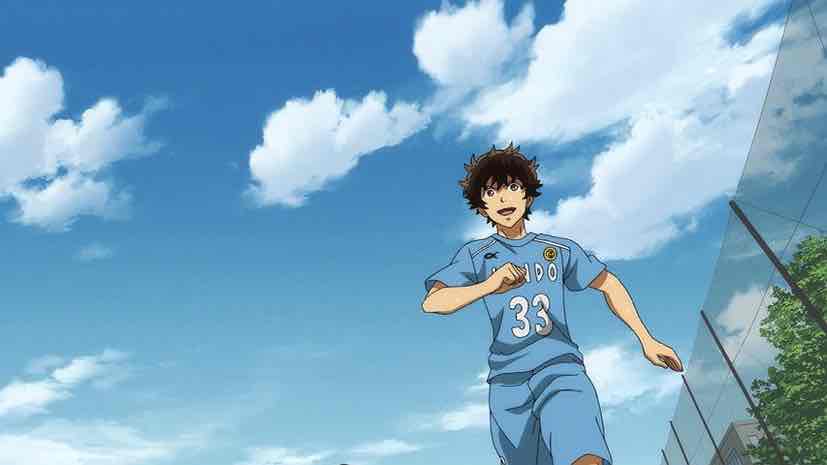
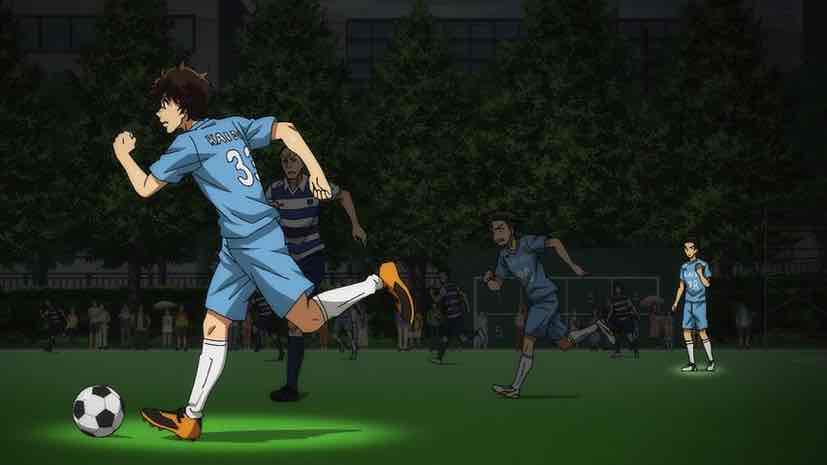
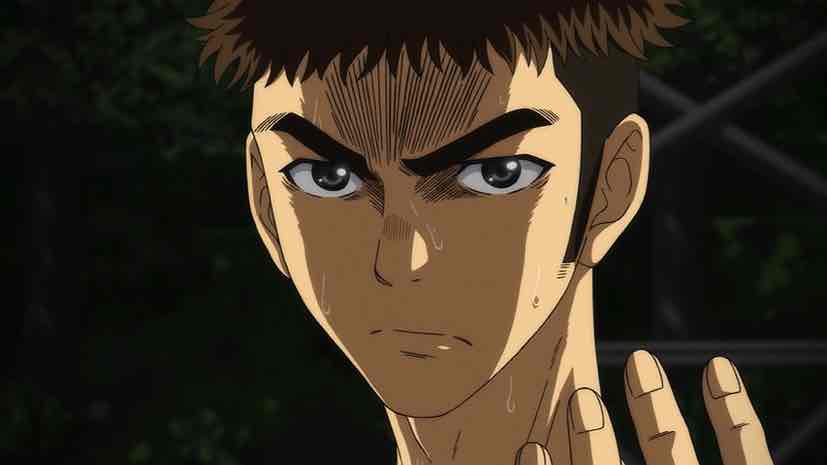
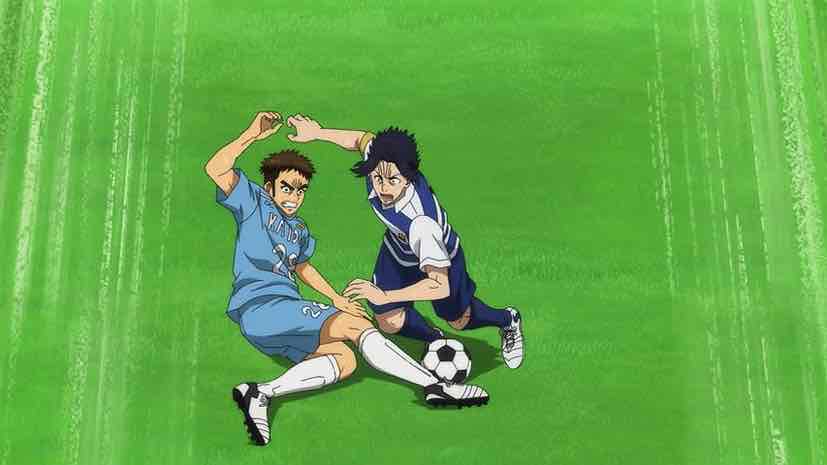
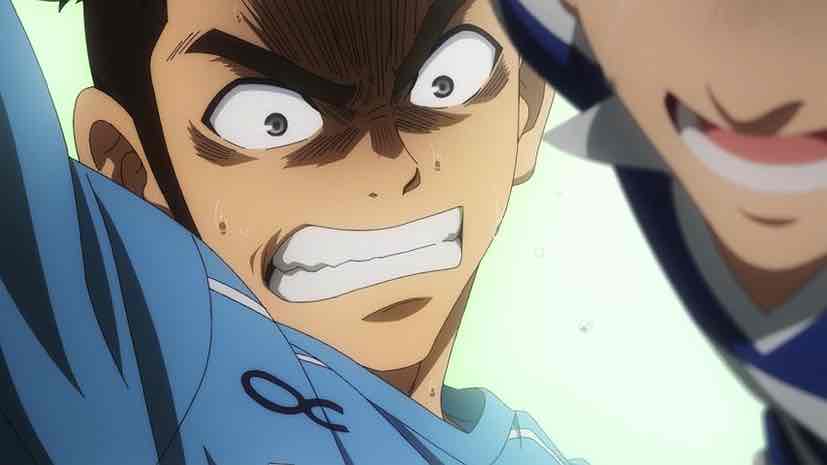
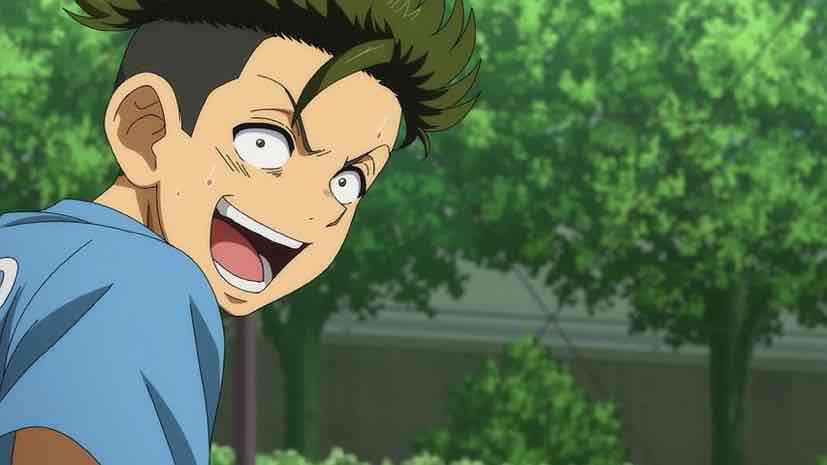
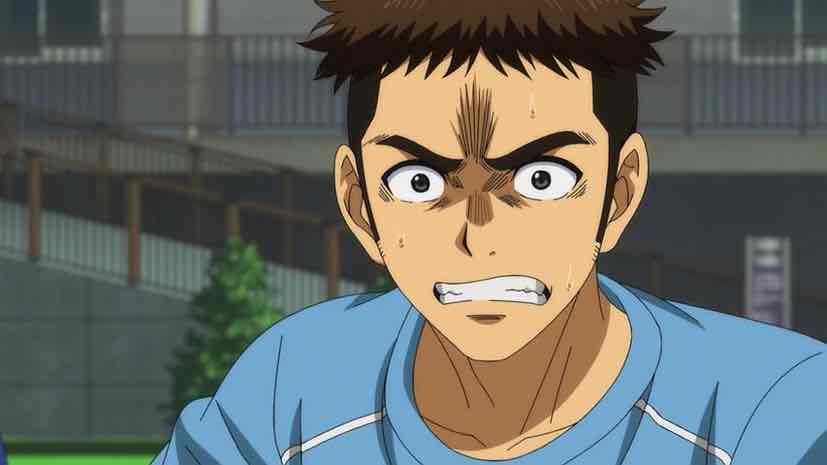
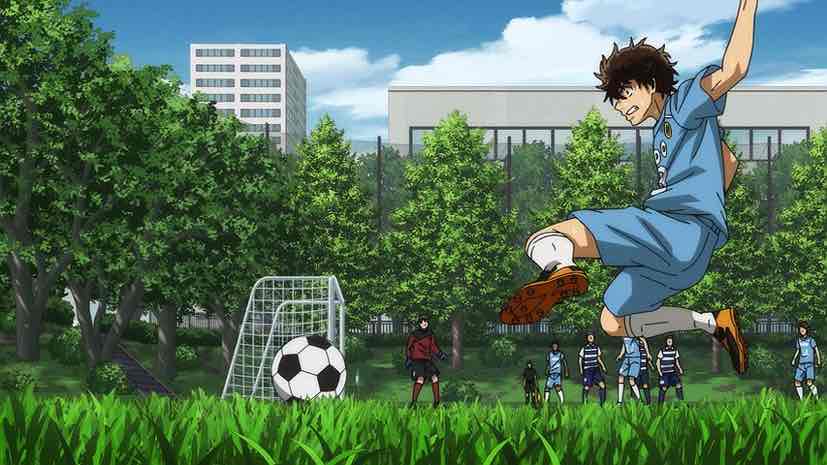


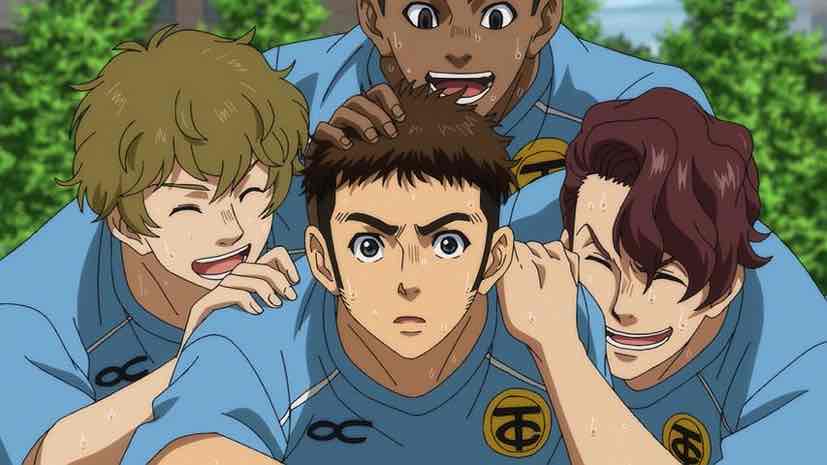
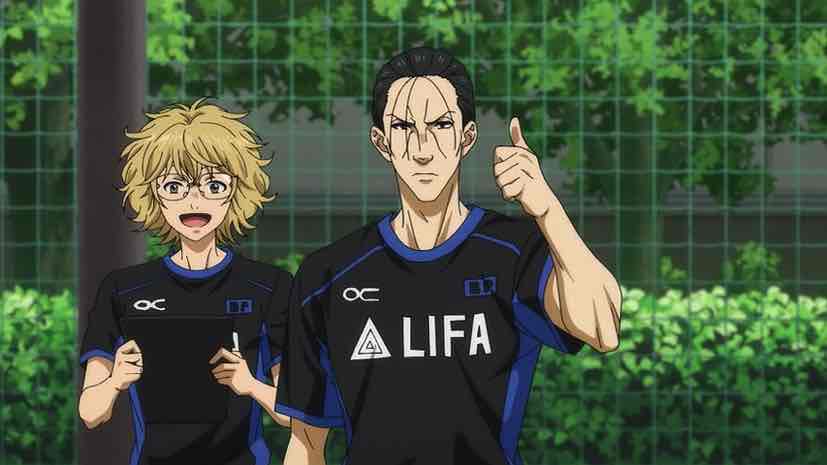
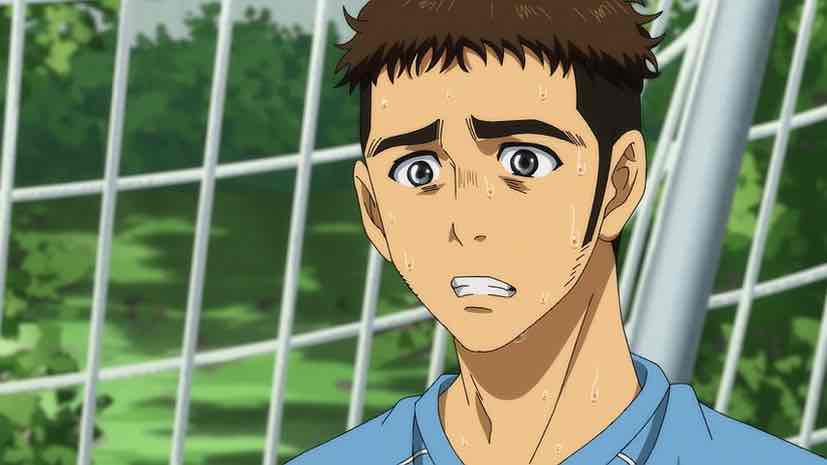
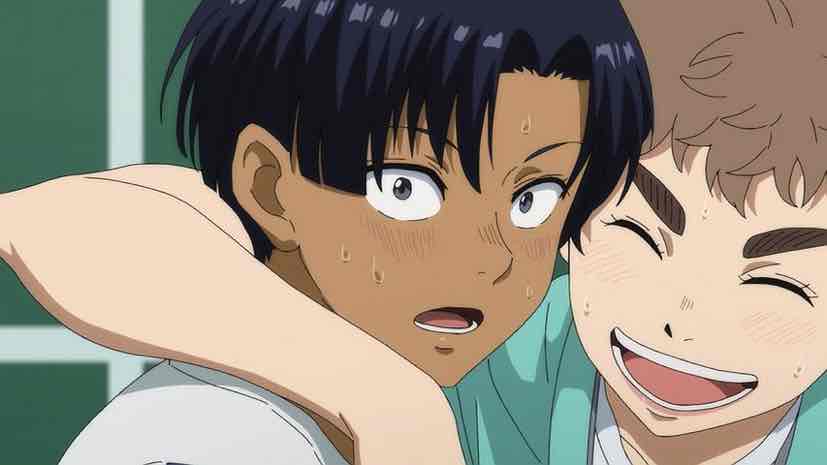



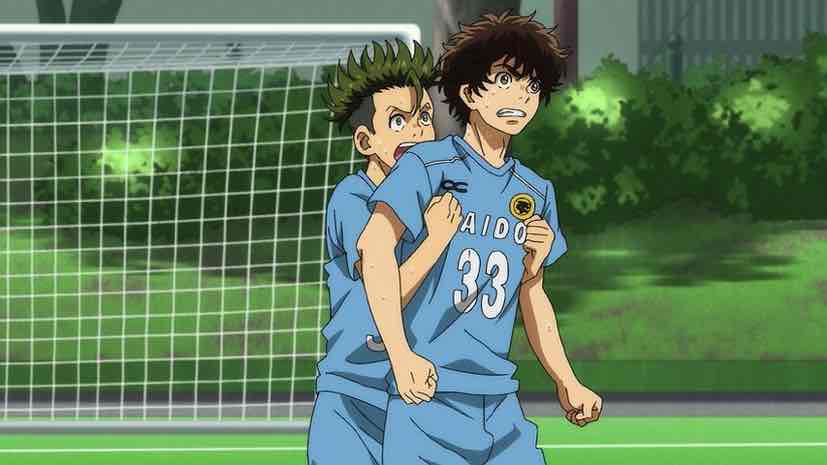
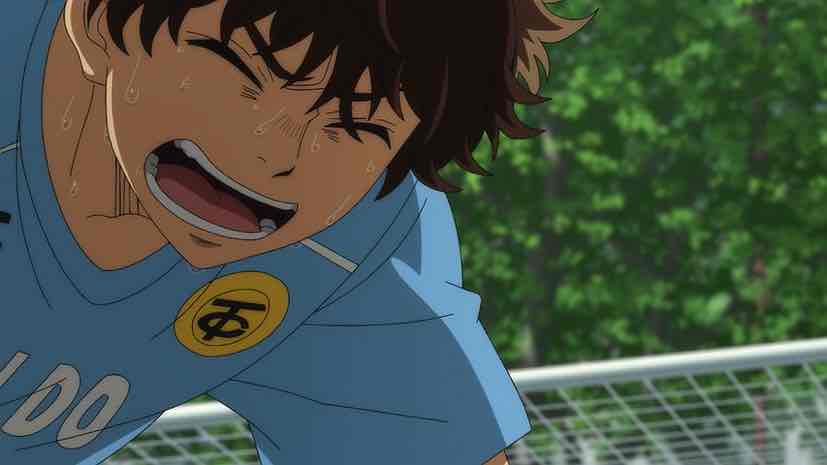
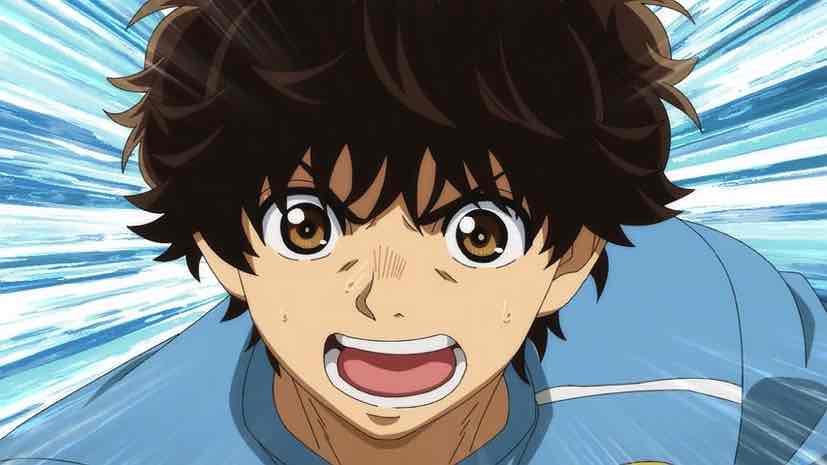

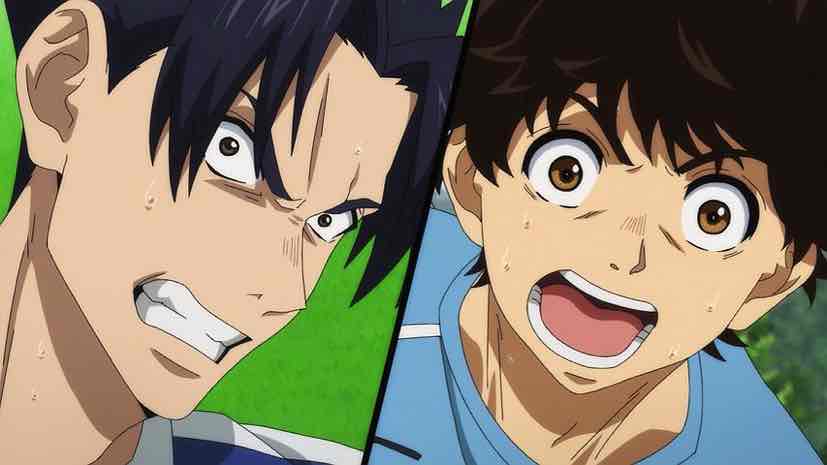
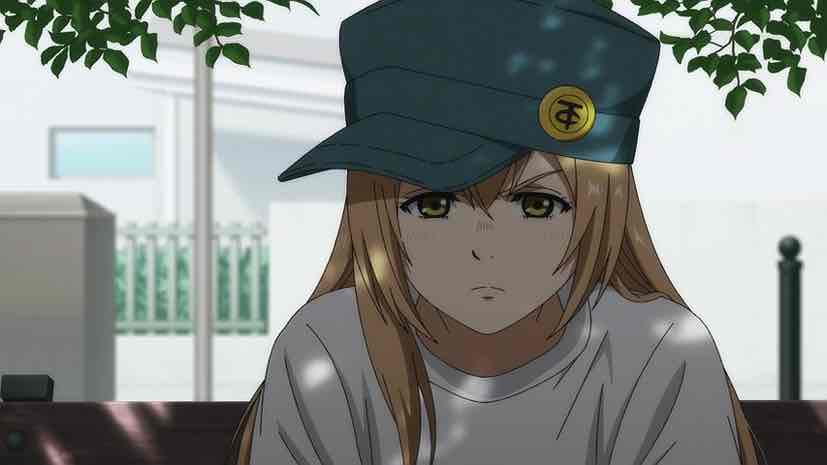
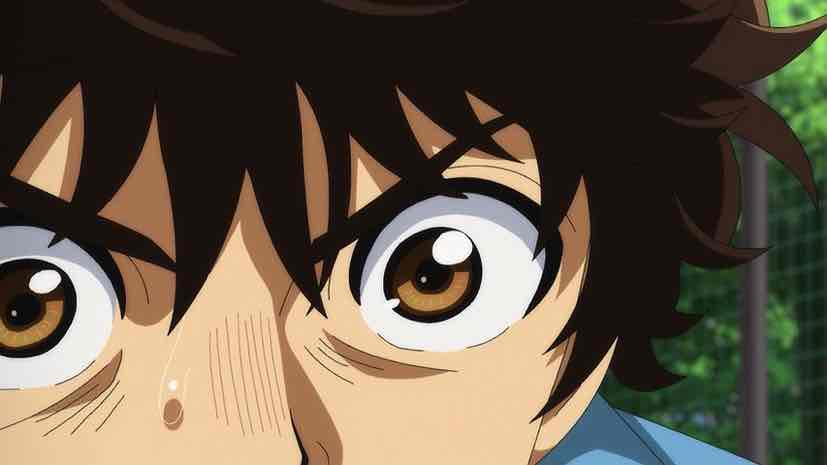

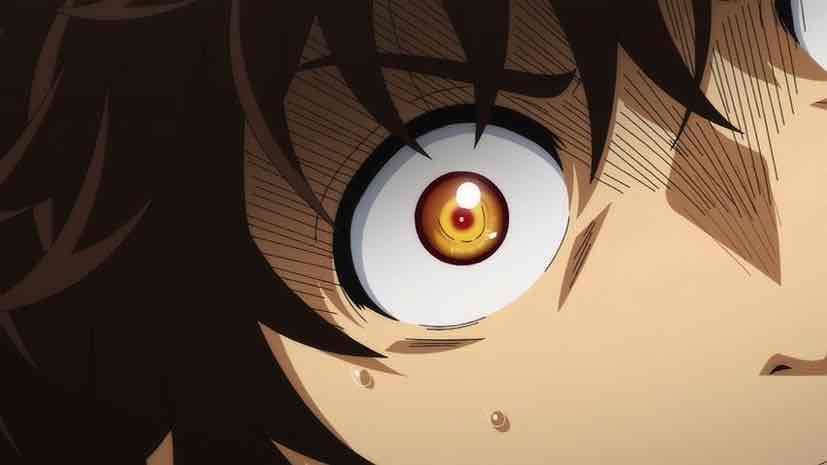
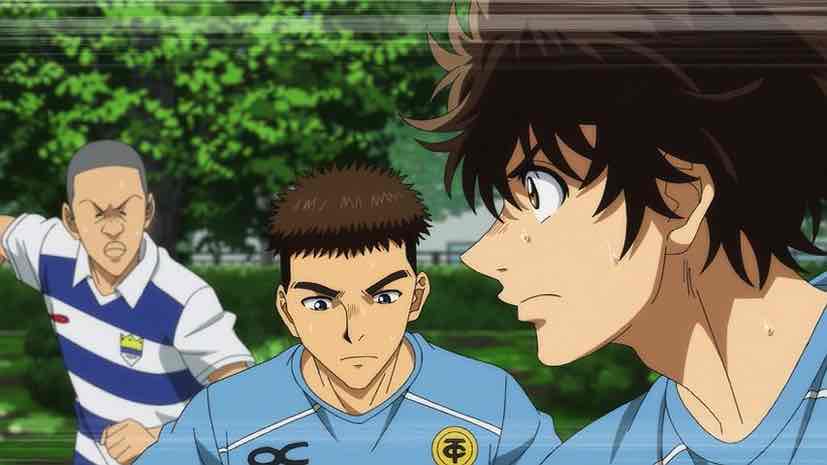

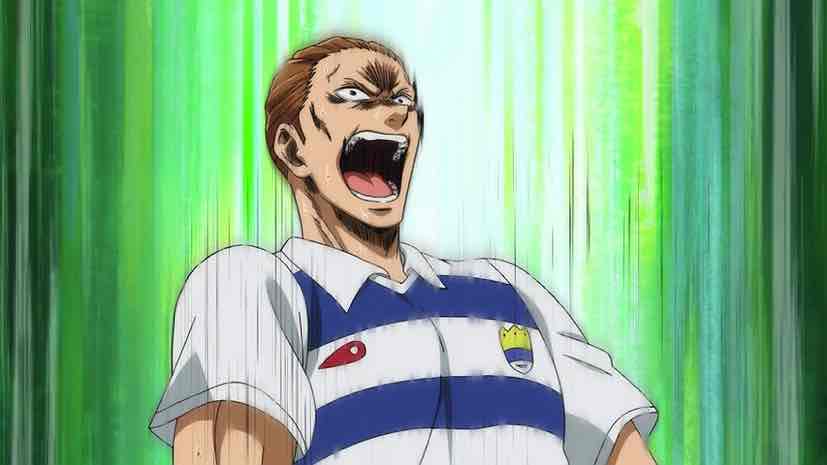
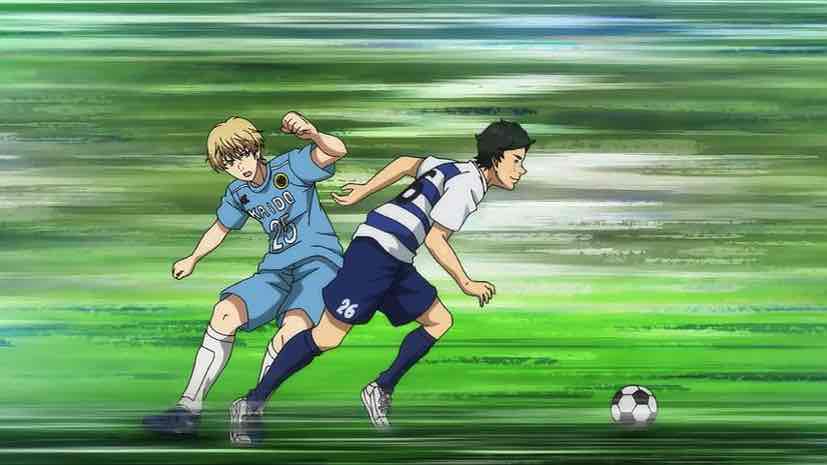
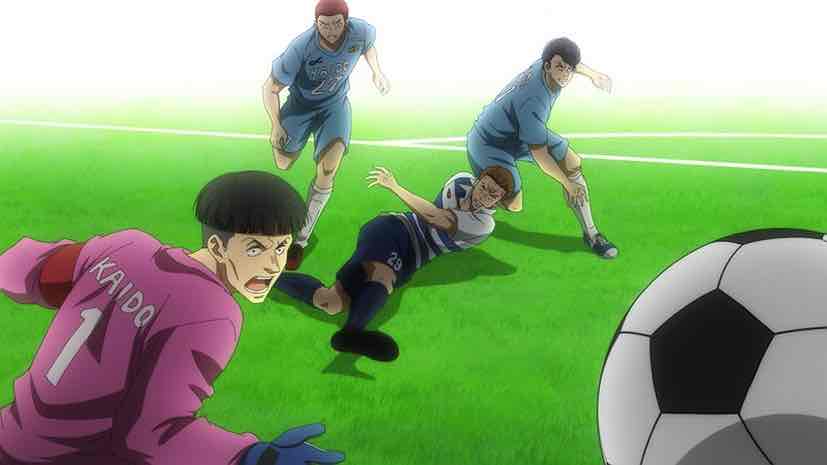
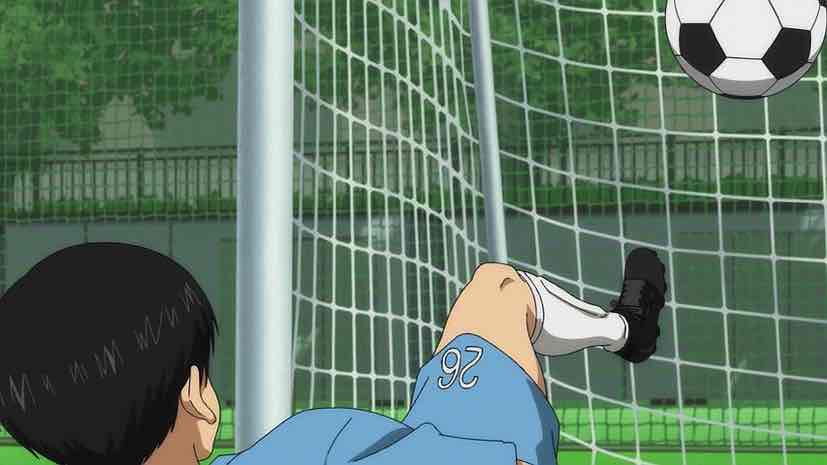
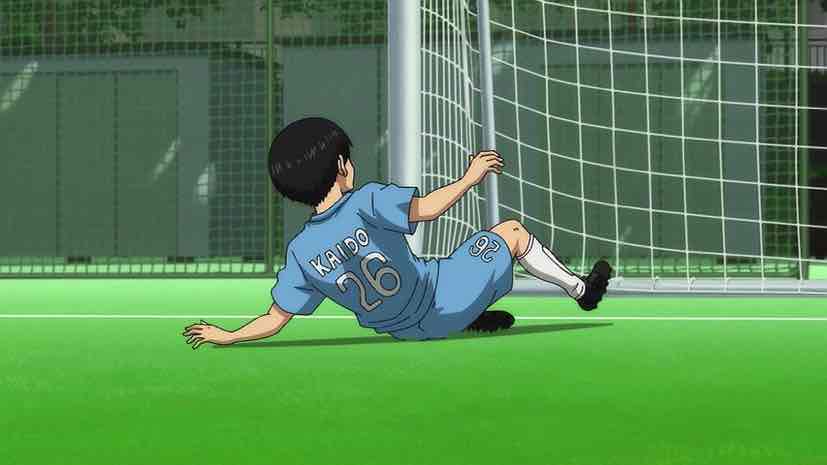
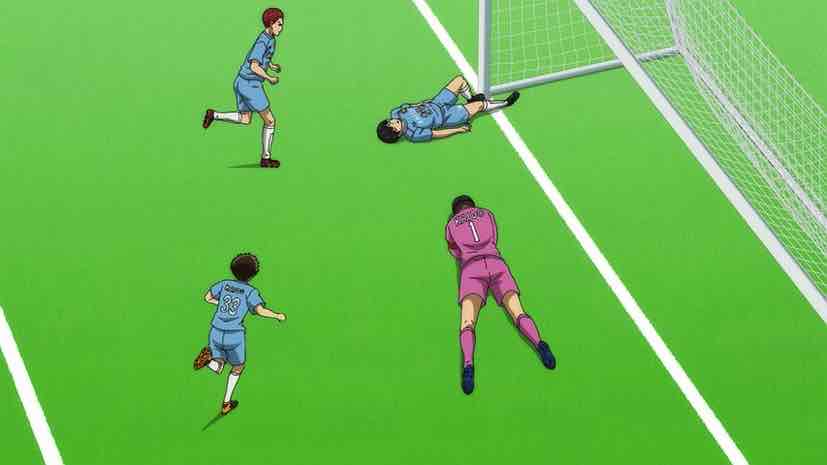
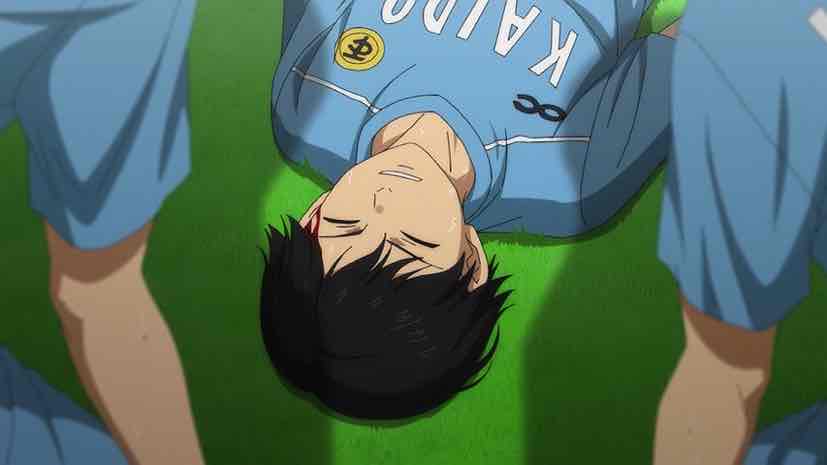
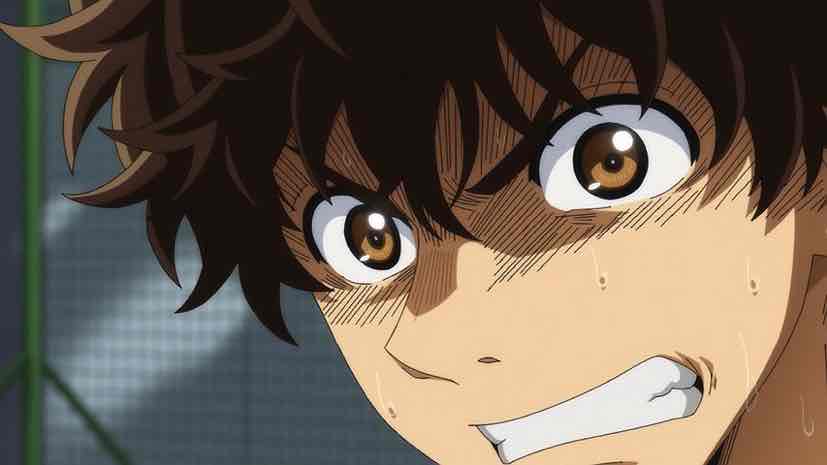
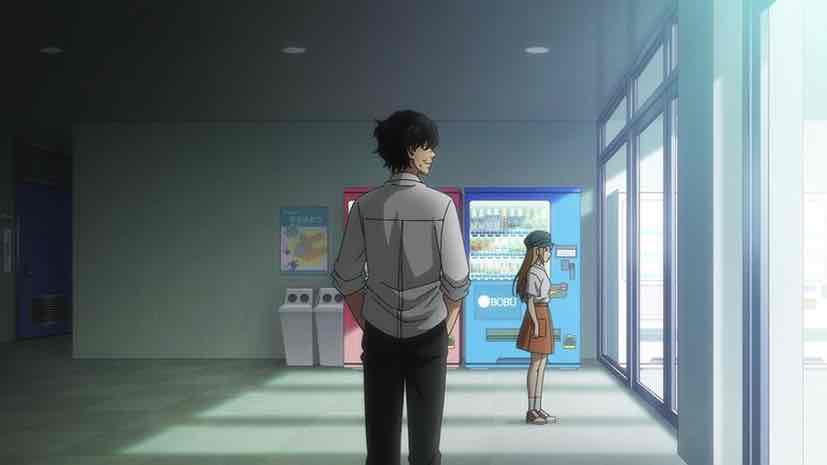
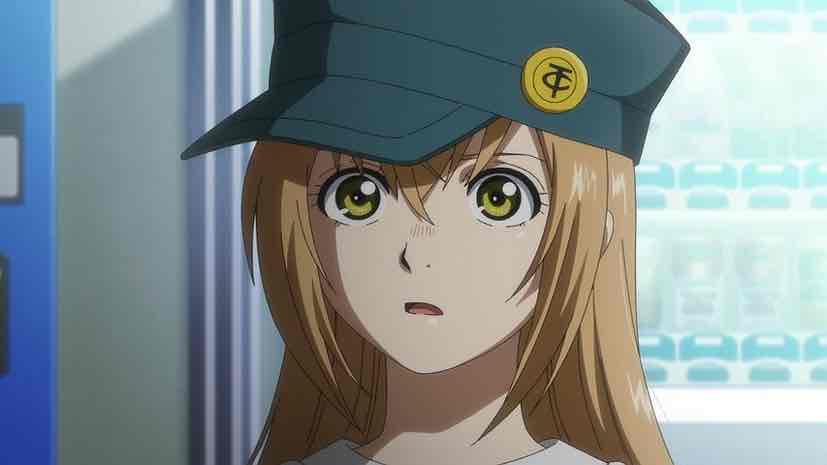
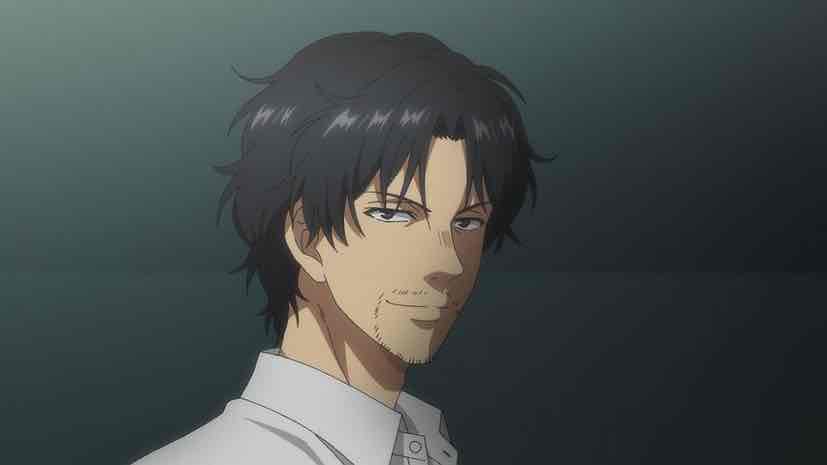


Riv
September 11, 2022 at 3:35 amI’ve really enjoyed this game– it was great when Tachibana scored. Not being that familiar with soccer, I did have to look up what being offside meant to understand why they kept getting called on it. I also liked how the opposing team’s coach zeroed in on the plays that Ashito made that were so effective. They weren’t flashy but critical. I wonder if Ashito will grow to appreciate those moments as much as scoring a goal.
Haraga
September 11, 2022 at 8:43 amThis series is really good at introducing new concepts in a natural way. Coaches and players think similarly to how they do in real life and for each measure they find just the countermeasure real pros would. The author really knows his stuff.
Jindujun93
September 11, 2022 at 8:57 pmAs an interesting little tidbit, in the manga it was actually only revealed that Kuroda saved Esperion from a goal AFTER that conversation between Fukuda and Hana (at the start of the next chapter, basically). But I guess the anime didn’t want to have that evil of a cliffhanger, so they revealed that Kuroda saved the team right away, haha. Only two more episodes to go, and those are going to be great, because I have very fond memories of the second half for Esperion vs Musashino. Here’s really hoping an S2 announcement comes at the end of the cour…
Guardian Enzo
September 11, 2022 at 9:14 pmOr before!
roger p
September 14, 2022 at 3:04 amYour comment on the second half of the match got me so excited that I went and check the relevant chapters in the manga -which I had not done with Ao Ashi so far. All I can say is that the manga not only did not disappoint, but I am even more fired up for the last two episodes now haha … Anyway, thanks a lot:D
Marty
September 12, 2022 at 9:16 pmSomething I’m curious about is what exactly does it take for a sports anime to pop off in the west.
After binge-watching to catch up to this series, its a very well-written show with a solid and honest grasp of the sport it Depicts.
What forces exactly determine whether a show like Haikyuu becomes a worldwide sensation but this doesn’t. Both have likeable characters, good animation, and don’t enter into the world of the fantástical. Heck, I would even argue football is a much larger worldwide sport than volleyball.
Is it something related to powers beyond an anímense control, like time, place, and luck? Were the Mid-2010’s that much of a more open anime landscape to sports than the early 2020’s? Or is it just a case of “you lose some, you win some.”
Guardian Enzo
September 12, 2022 at 11:18 pmTBH I don’t think Haikyuu is all that big in North America (we can say “The West” but TBH France’s tastes in animanga are more like Japan’s than America’s). It’s done OK but nothing huge. Off the top of my head I’m hard-pressed to think of a sports series that really broke big in English. Touch and Tsubasa aren’t even licensed.
As for why Haikyuu is “big-ish”, I think it’s the same reason it’s the biggest recent sports franchise in Japan – an adaptation with phenomenal production values and shounen ai. If you look at all the sports manga that have hit really big commercially in recent years (stuff like Haikyuu, KuroBas and Yowepeda) the unifying factor is their popularity with female otaku who also, statistically, like actual BL.